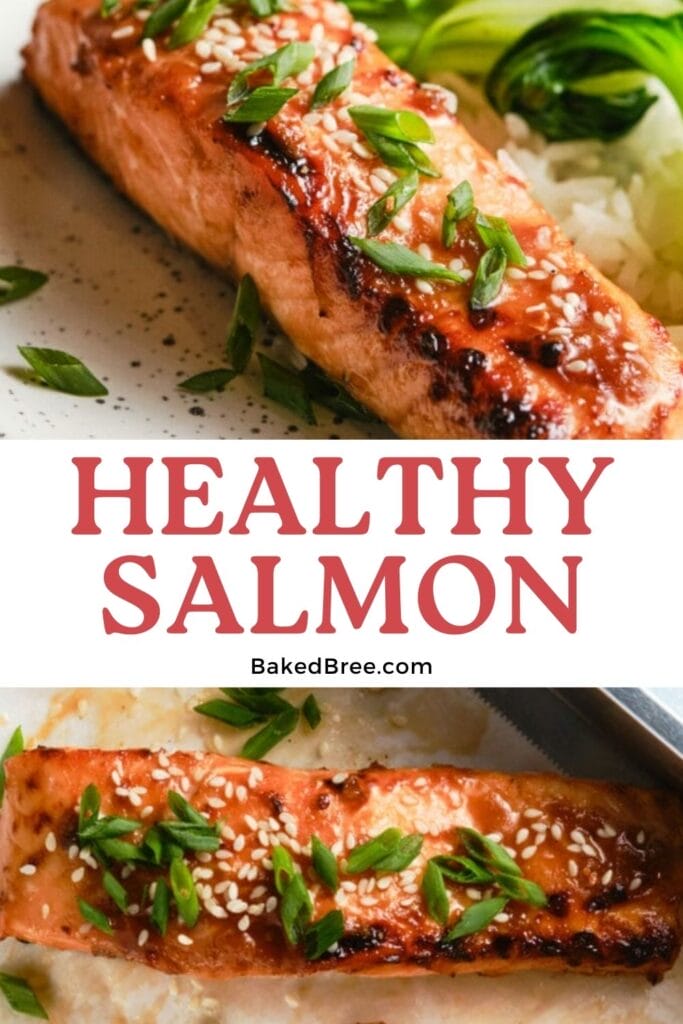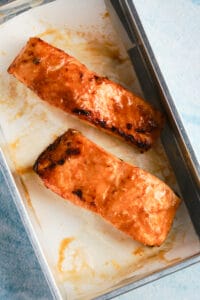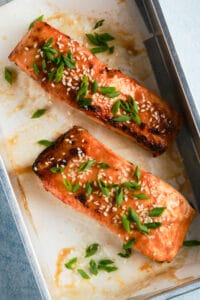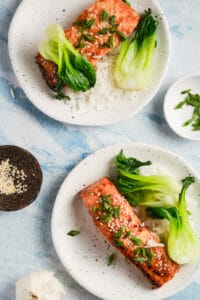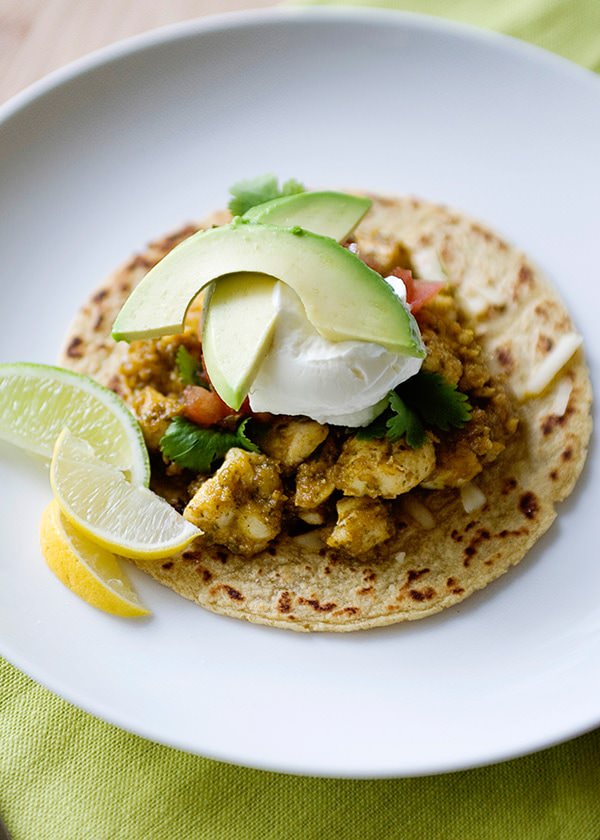This sweet and savory Asian salmon recipe bursts with umami!
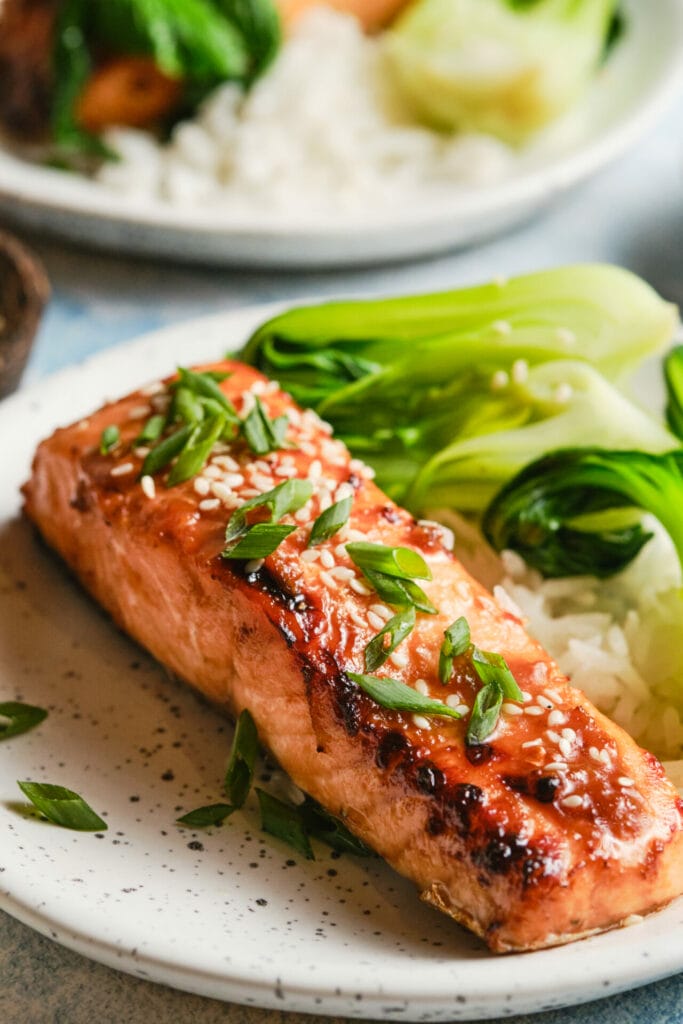
Ever since I became the main chef for the family, we’ve been eating more Asian-inspired meals. I just love all the flavor, or as they say in Japan, the umami that comes with these recipes. Salmon is a go-to in our house, so I’m always trying to come up with different ways to cook this wonderful fish. And if you like umami as much as I do, I think you’ll really appreciate this simple Asian salmon recipe.
What I like about this recipe, in particular, is that it’s so easy to make. I can make it any day of the week with minimal effort. The “hardest” part is just making sure I have all the ingredients on hand. Personally, I always have oyster and chili sauce in my pantry, and after you taste this salmon, you might too! My Asian salmon balances sweet and savory with the saltiness of the soy sauce and the sweetness of the oyster and chili sauce. The garlic and ginger also give this dish a spicy tang, while the scallions add a satisfying crunch. You don’t have to, but I’d serve this on a bed of white rice so you can soak this dish’s delicious flavor.
What Is Umami?
Umami is hard to put into words, but I’ll do my best. Basically, it’s a Japanese term that translates to “pleasant and savory taste.” More specifically, umami is considered the fifth basic taste after sweet, sour, bitter, and salty. Umami is in a lot of foods, including aged cheeses, seaweed, mushrooms, tomatoes, and especially any food that has gone through a fermentation or aging process. It’d be wrong to think that umami is simply salted food. It acts more as a balance and a way to enhance existing flavors. For example, oyster sauce is umami.
Oyster sauce is made by slowly simmering oysters in water until their juices caramelize into a thick, flavorful sauce that is then sweetened and salty. These concentrated flavors create glutamates, which create the umami taste. Oyster sauce adds a deep flavor to any dish and makes this salmon stand out. All this to say—don’t skip the oyster sauce.
Ingredients
- 2 salmon fillets skinless (about 1/2 lb each)
- 1 tsp fresh ginger finely grated
- 1 garlic clove minced
- 1 tbsp low-sodium soy sauce
- 2 tbsp oyster sauce
- 2 tbsp sweet chili sauce
- Sesame seeds for garnish
- 2 scallions finely sliced

How to Make Asian Salmon
Step 1: In a shallow dish, whisk together the ginger, garlic, soy sauce, oyster sauce and sweet chili sauce.

Step 2: Add the salmon fillets to the marinade, turning them to ensure they’re well coated. You can do this for as little as 30 minutes or up to overnight in the fridge.
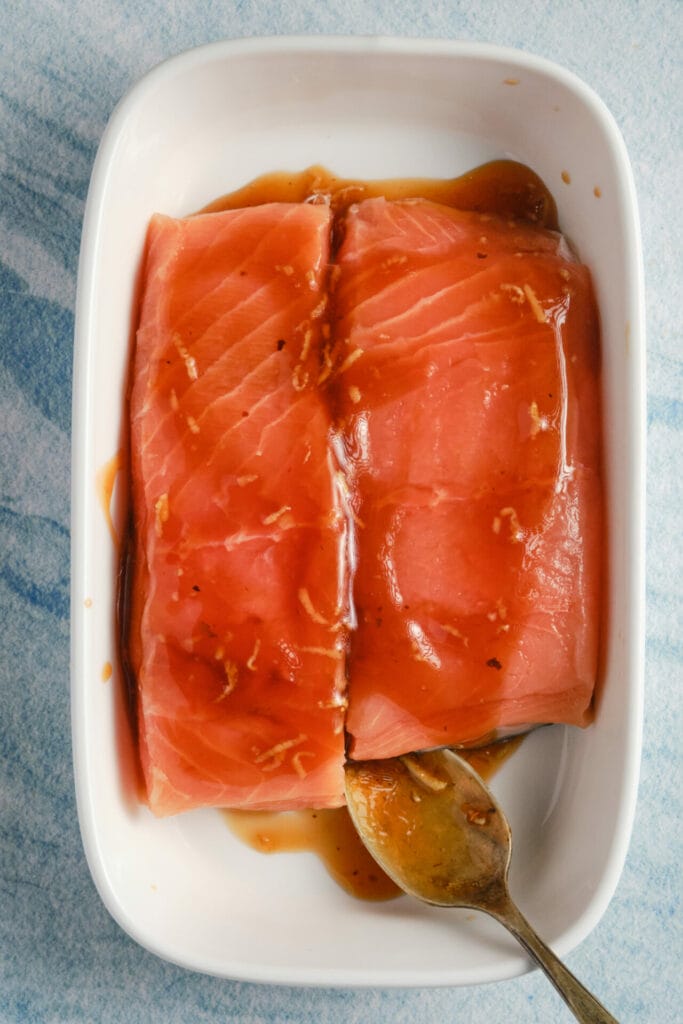
Step 3: When you’re ready to cook, preheat your broiler to high and position the oven rack about 10 inches below the heat source.
Step 4: Line a baking tray with foil and place the salmon fillets on the tray. Pour any remaining marinade over the top.
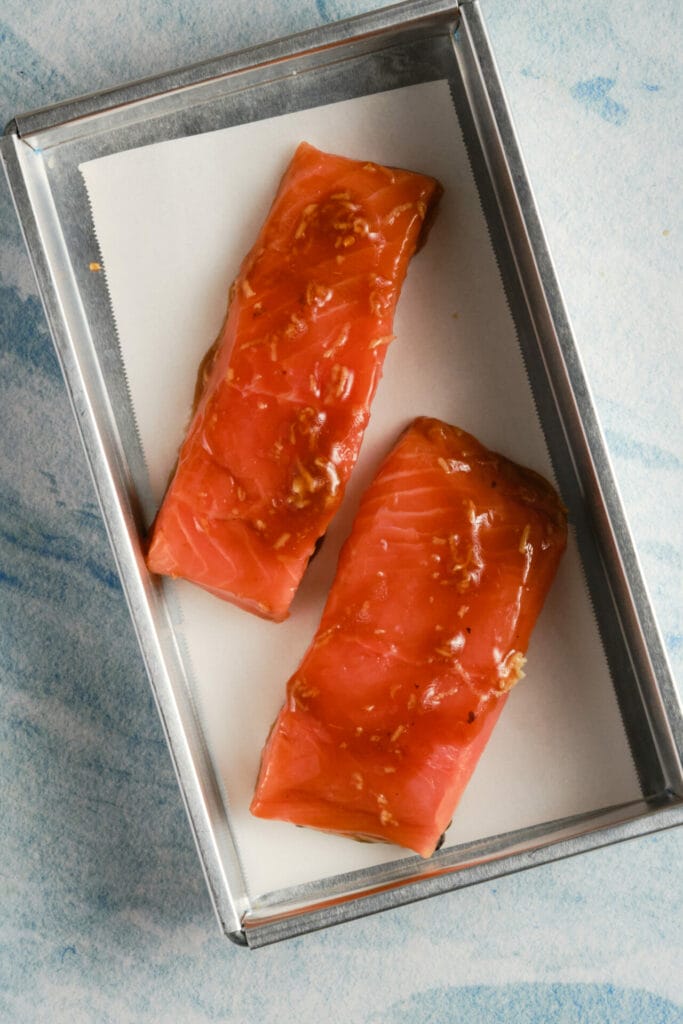
Step 5: Broil the salmon for 7 to 10 minutes. The top needs to be caramelized and the fish flake easily. The exact time will depend on the thickness of your salmon so watch it carefully. Overcooking can dry it out, if you have a meat (or rather fish!) thermometer, aim for an internal temperature of about 145°F.
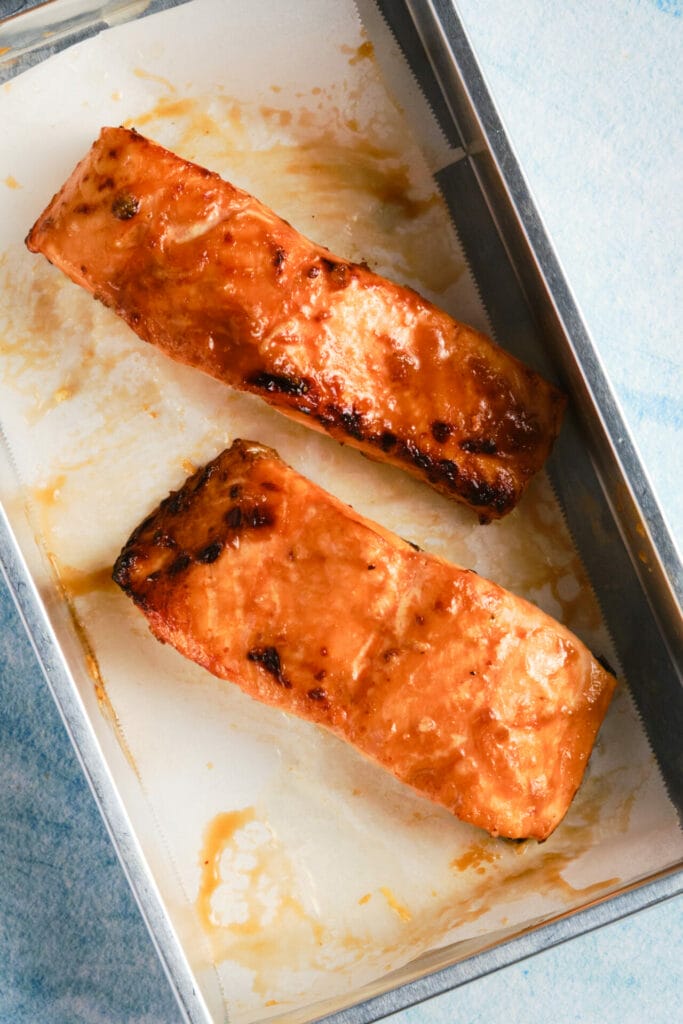
Step 6: Sprinkle the broiled salmon with sesame seeds and sliced scallions.
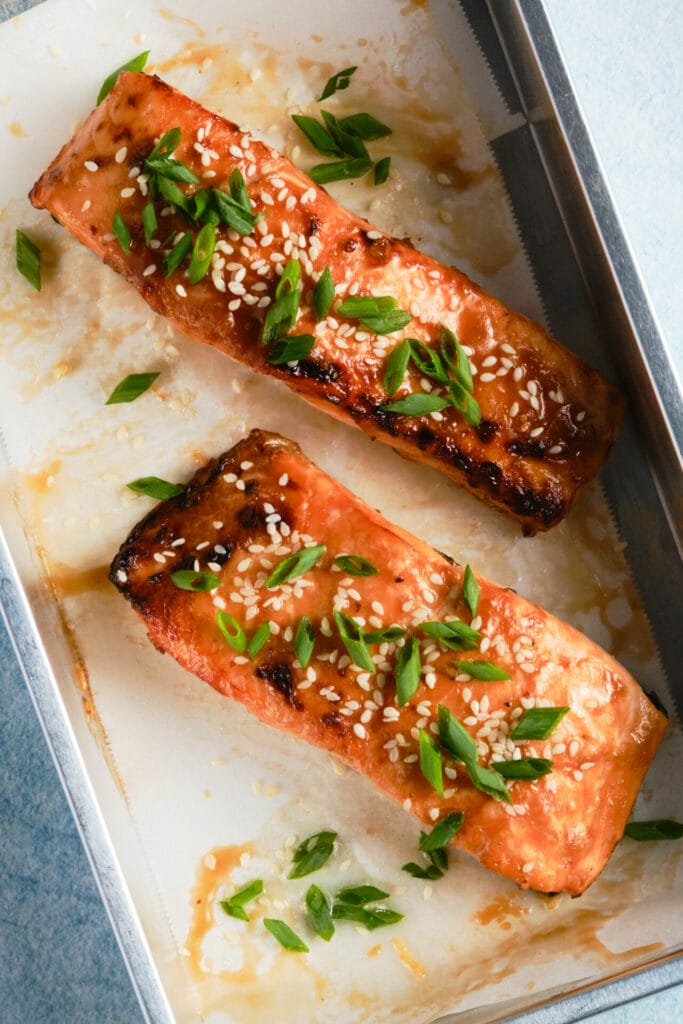
Step 7: I recommend to serve the salmon with steamed rice and and greens.

FAQs & Tips
While I prefer eating this dish right away, you can definitely make it ahead and store it in the fridge. All you need is an airtight container; plastic wrap can work, too. Since this is fish, it won’t last as long, maybe 3 days tops. Sidenote: this salmon tastes delicious cold on salads!
Yes! In fact, I prefer it as the marinade really brings out the salmon’s natural flavor. Also, this marinade is mild enough that you don’t have to worry about over-tenderizing the meat.
I’d steer clear. The marinade will likely contain bacteria from soaking in the fish. You could reduce the sauce in a pan; that would probably get rid of any bacteria. However, I’d make a new sauce just to be safe.
When it comes to meat, and especially fish, it’s best to reheat low and slow. By that, I mean whatever you use (microwave, pan, toaster oven, etc.), take your time. Reheating at a lower temp lessens the chance of you overcooking or drying the meat out. Brushing the salmon with oil or butter can help, too—and don’t forget to cover it!

Serving Suggestions
Steamed or baked rice is a perfectly acceptable pairing for Asian salmon, but sometimes, I like to amp up the umami with a dish like shrimp fried rice. It’s never a bad thing to enjoy seafood with a side of seafood, right? However, the Asian salmon is already packed with flavor, so bok choy or an easy sauteed broccoli recipe might not be a bad choice either.
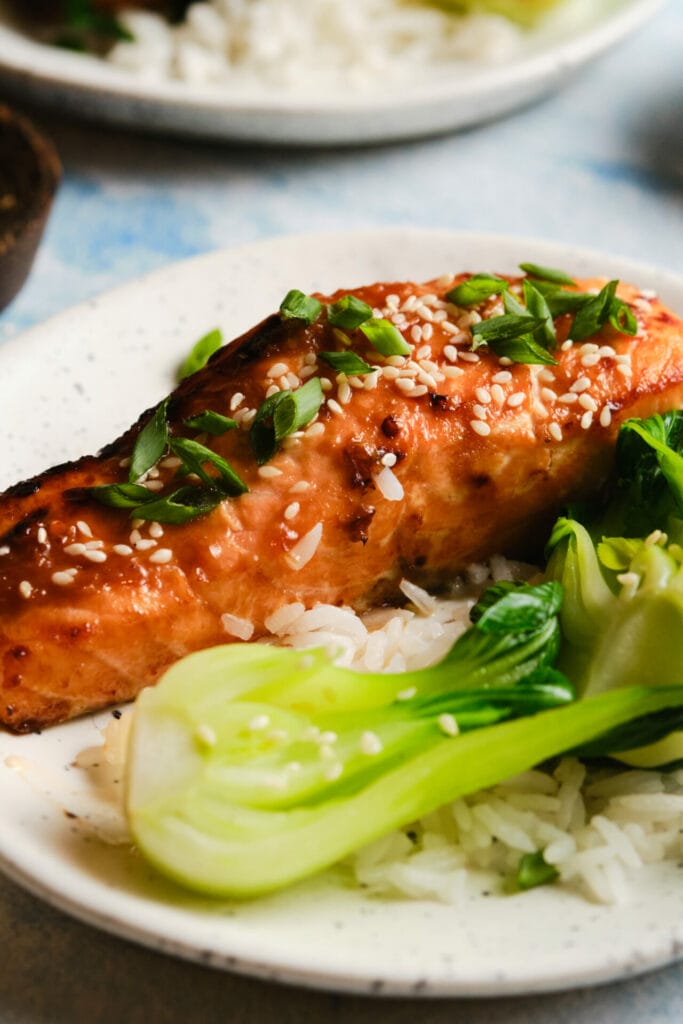
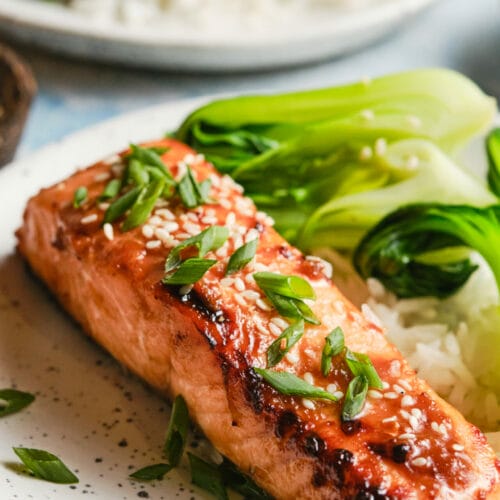
Asian Salmon
Ingredients
- 2 salmon fillets skinless (about 1/2 lb each)
- 1 tsp fresh ginger finely grated
- 1 garlic clove minced
- 1 tbsp low-sodium soy sauce
- 2 tbsp oyster sauce
- 2 tbsp sweet chili sauce
- Sesame seeds for garnish
- 2 scallions finely sliced
Instructions
- In a shallow dish, whisk together the ginger, garlic, soy sauce, oyster sauce and sweet chili sauce..
- Add the salmon fillets to the marinade, turning them to ensure they’re well coated. You can do this for as little as 30 minutes or up to overnight in the fridge.

- When you’re ready to cook, preheat your broiler to high and position the oven rack about 10 inches below the heat source.
- Line a baking tray with foil and place the salmon fillets on the tray. Pour any remaining marinade over the top.

- Broil the salmon for 7 to 10 minutes. The top needs to be caramelized and the fish flake easily. The exact time will depend on the thickness of your salmon so watch it carefully. Overcooking can dry it out, if you have a meat (or rather fish!) thermometer, aim for an internal temperature of about 145°F.

- Sprinkle the broiled salmon with sesame seeds and sliced scallions.

- I recommend to serve the salmon with steamed rice and your choice of Asian greens.

Nutrition
